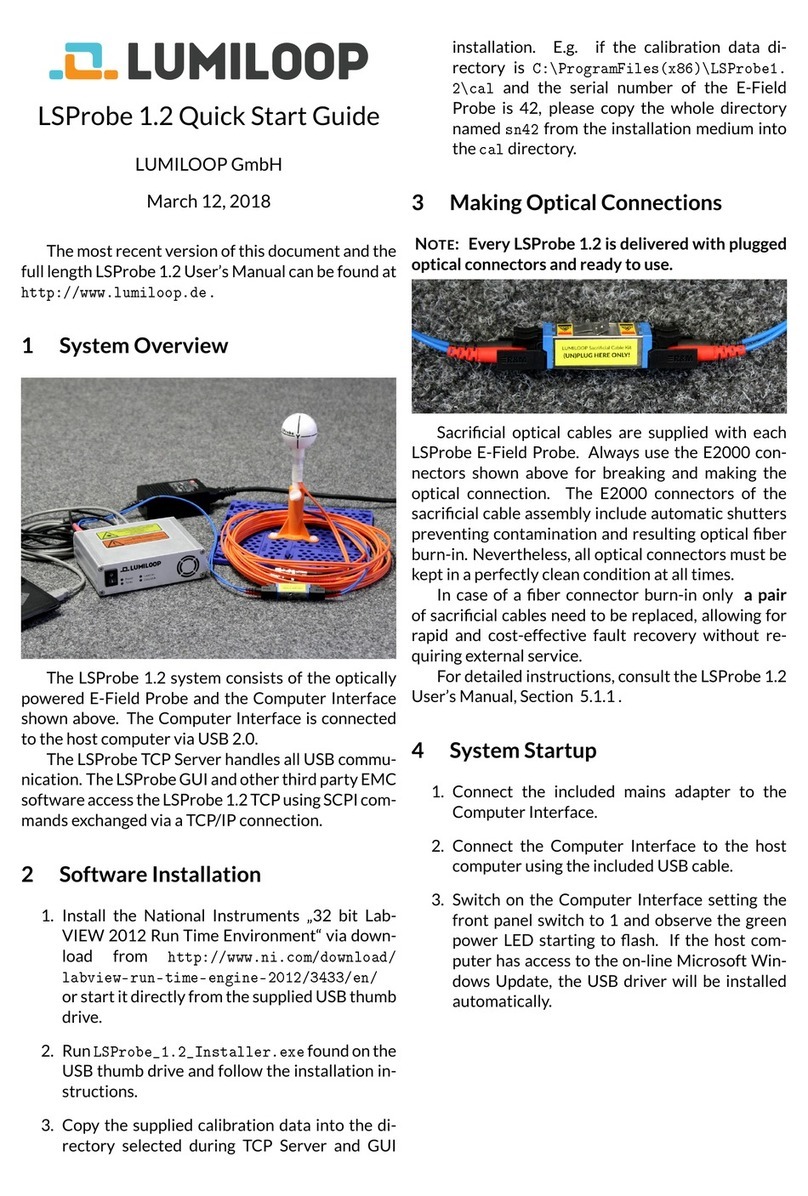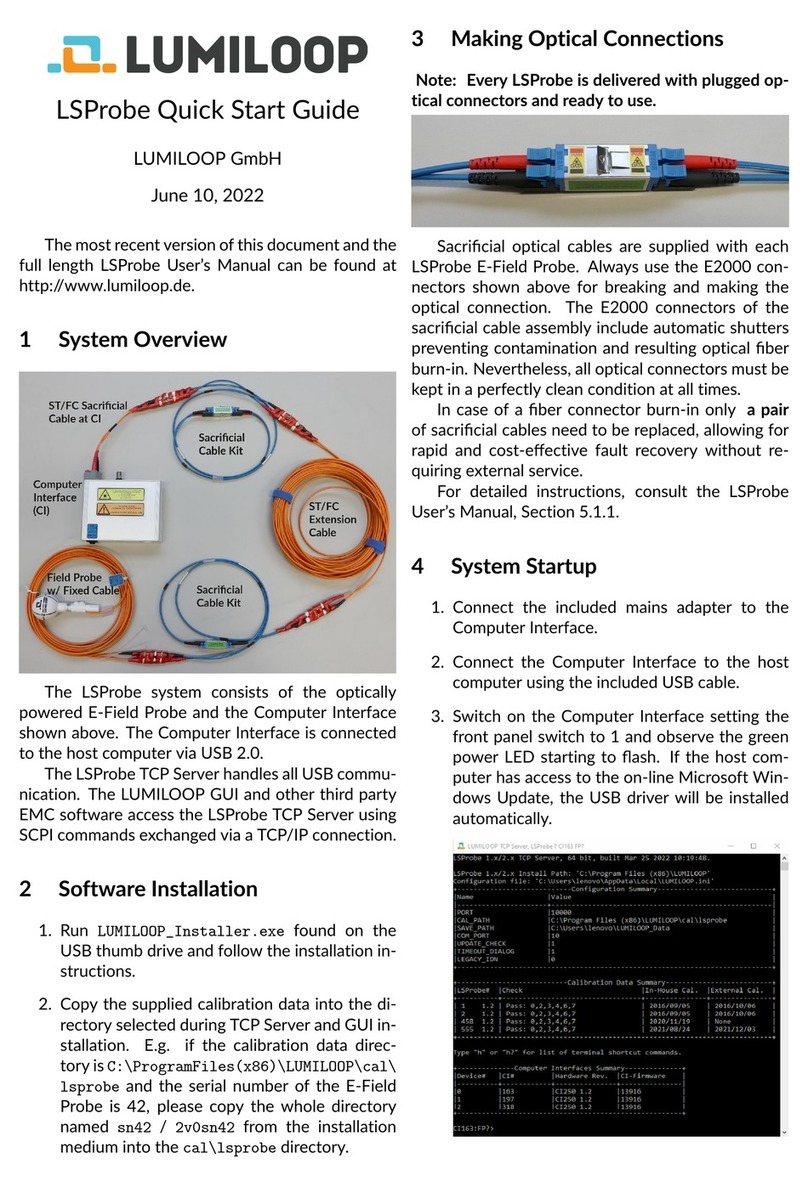
Application Note 4 Reliable Operation of LSProbe 1.2 Field Probes
1 Introduction
Electric-field probes fall into one of two categories – battery-powered and laser-powered.
Laser-powered probes offer the significant advantage of unlimited continuous operation.
They save both time and effort for recharging or exchanging batteries or field probes.
However, most laser-powered field probes face a common issue. Contamination of the fiber
connector end-faces can result in burn-in defects and thus system failures. Fig. 1 shows the
end-faces of a clean, a contaminated and a defective (burned-in) fiber connector.
clean
Core
62.5 µm
Cladding
125 µm
Figure 1: End-faces of optical fiber connector, viewed through fiber microscope
To mitigate this issue and enable reliable operation, LUMILOOP has developed sacrificial
cable kits that are included in every LSProbe 1.2 Field Probe delivery.
The sacrificial cable kits operate as connector savers for the FC/ST connectors of Field
Probe, Computer Interface and extension cable. They provide two defined and convenient
points for disconnecting the Field Probe from the Computer Interface using the E2000 con-
nectors of the sacrificial cable kits.
Due to the integrated shutters, burn-in defects at the E2000 connectors are significantly
less frequent. However, in the case of a burn-in defect at an E2000 connector, the sacrificial
cable kit can easily be replaced with a spare kit. That means, the system is quickly ready
for use again. A spare sacrificial cable kit is provided with each LSProbe 1.2 Field Probe.
To avoid further progression of burn-in defects, the complete kit including both sacrificial
cables and the E2000 coupler shall always be replaced.
This document gives detailed instructions on operating laser-powered field probes both
reliably and effortlessly, it contains four more sections:
• Section 2, page 3, the mechanism of fiber failures,
• Section 3, page 4, purpose and application of sacrificial cables kits,
• Section 4, page 6, fiber connector cleaning instructions,
• Section 5, page 8, replacement of sacrificial cable kits,
• Section 6, page 9, fiber handling recommendations.
November 23, 2020 Page 2/9




























